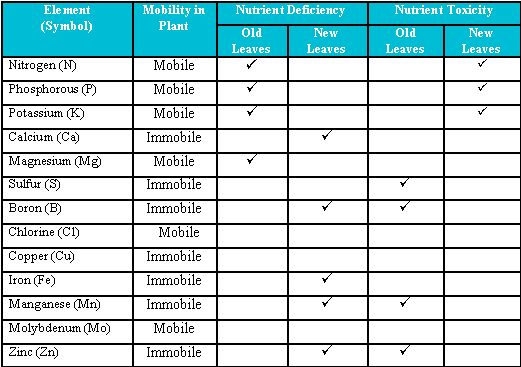Im sure this has been said many times before but.....…
Solving nutrient-deficiency problems is much easier when you know which nutrients are mobile or immobile.....and there effects on growth...... Once inside plants, nutrients are transported to where they are needed, typically to growing points...….
Mobile nutrient's, such as Nitrogen, Phosphorous, Potassium, Magnesium, etc...... are nutrient's that plants can move from one part of their self to another.....typically from older growth (lower on the plant) to new growth …...new tips, buds, etc. …..
"Mobile" nutrient deficiencies,.... typically show in the LOWER or OLDER leaves…..When a deficiency occurs, the plant will move "mobile" nutrient's to the growth that needs them...…...Example ….during strong growth,... they need lots of Nitrogen, if they don't get enough,... they will relocate N from lower, older, leaves.... to upper new growth...…...the result is a fade of green or color change in the older lower leaves as the Nitrogen is pulled out ..... the upper or new growth will be a darker green then the lower leaves....
Immobile nutrients, such as Calcium, Iron, Manganese, etc. are absorbed and stay put, they usually, can not be relocated elsewhere in the plant....
"Immobile " nutrient issues, typically show in the NEW or UPPER growth.....Example: ..Calcium,.. is the cell structure of the plant,... all growth requires lots of calcium to build each cell wall, that includes roots as well....... it also helps Nitrogen to be utilized …...so during Calcium deficiency ….new or upper growth can be stalled, slow to grow, twisted, etc...…as it effects the cell structure and the rate of growth
.......when faced with plant issue......look at the plant....are the issues in the lower, older growth...........or the newer upper growth?.........






